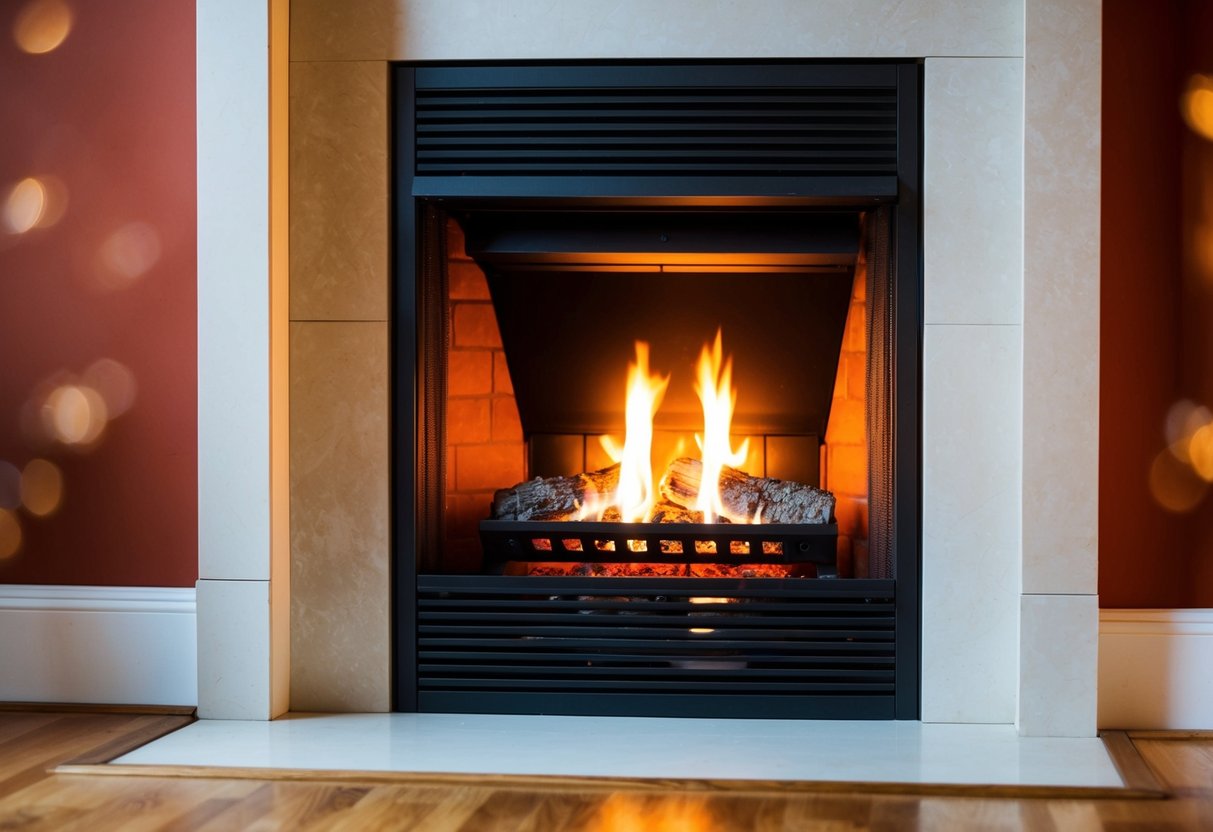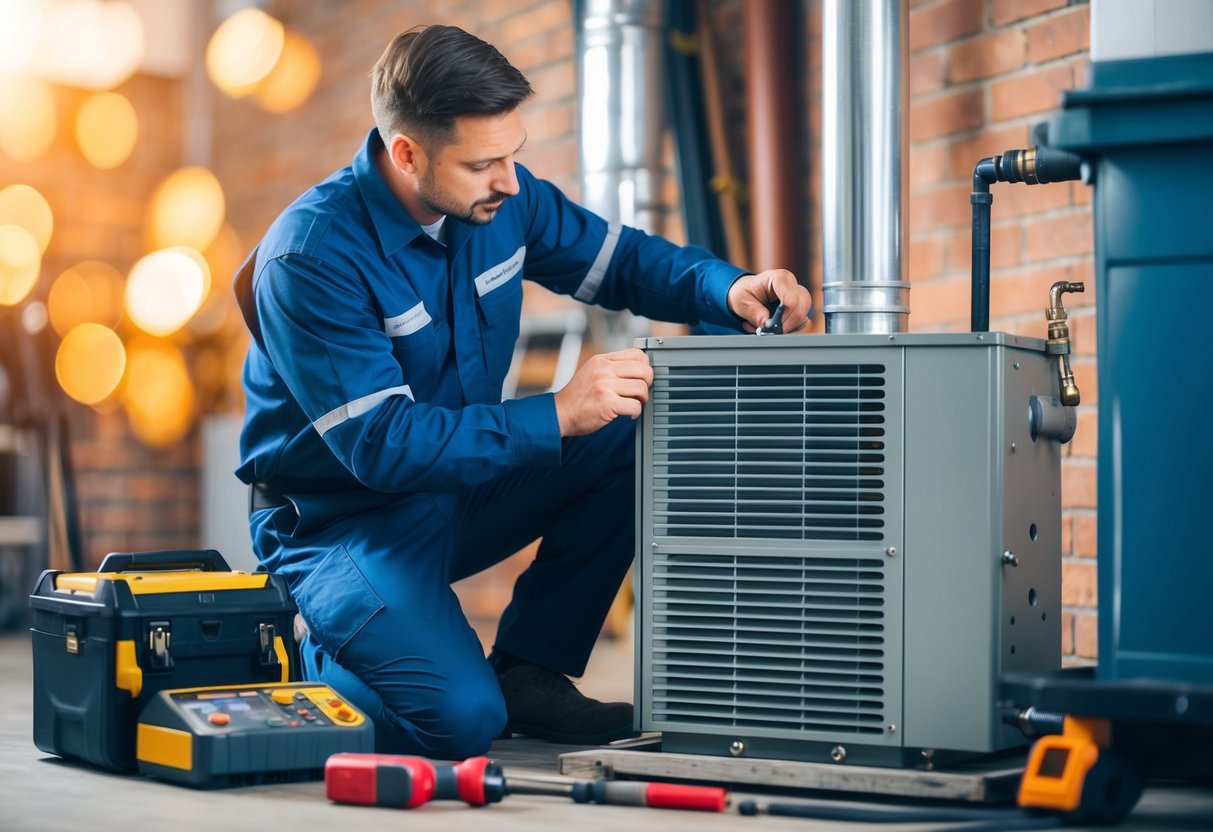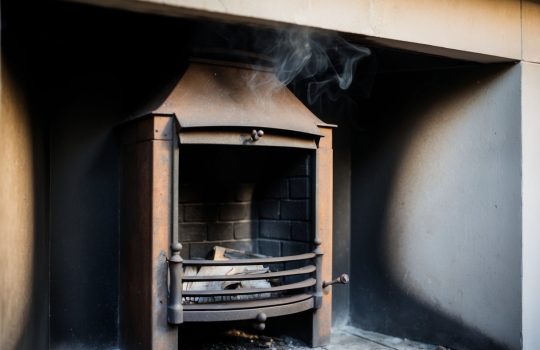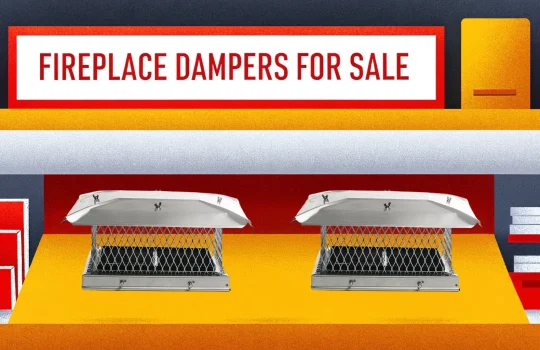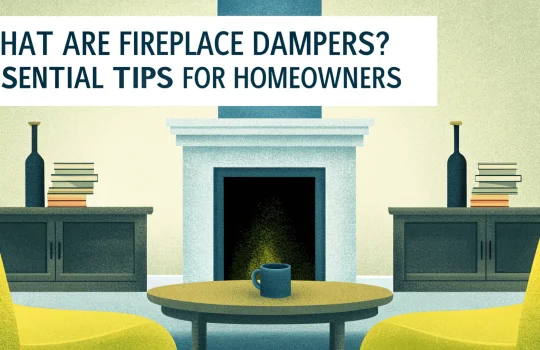How to Properly Use and Maintain Your Fireplace Damper: Essential Tips for Homeowners
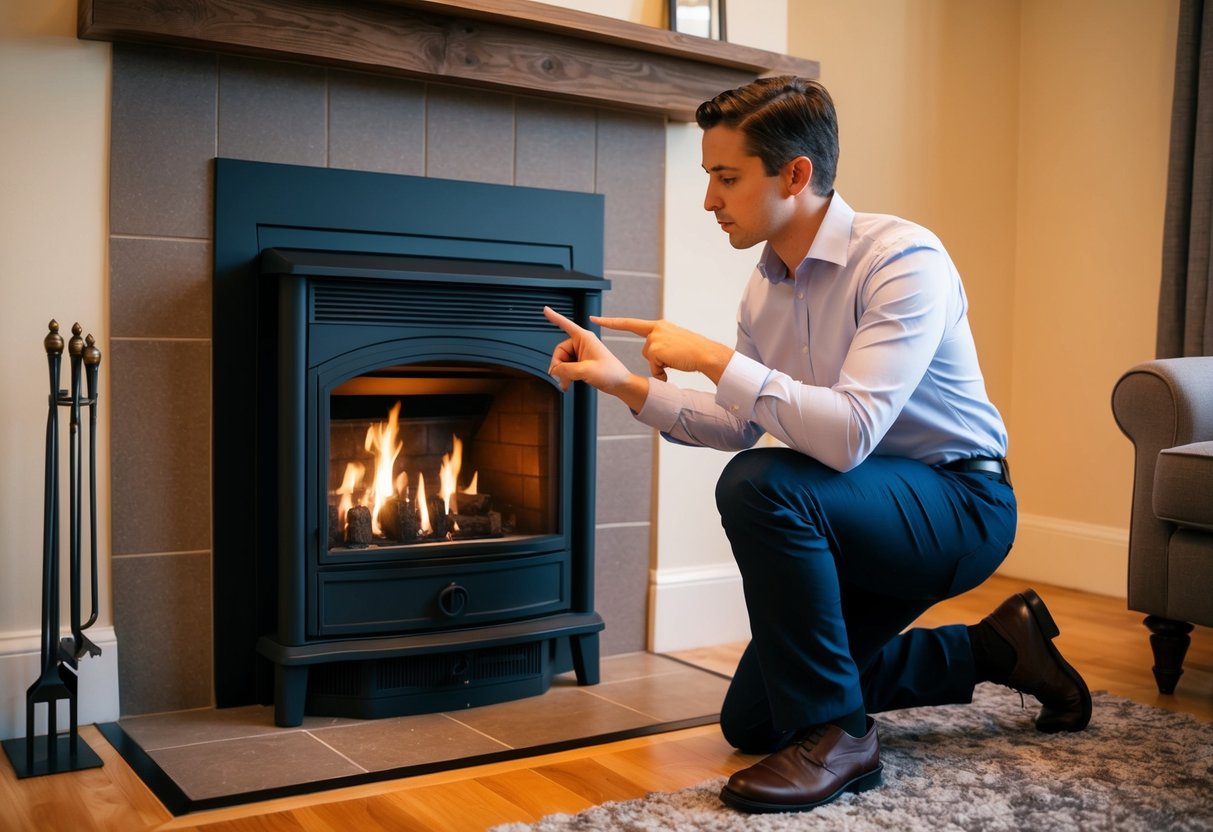
A fireplace damper is an essential component that regulates airflow and enhances the efficiency of your fireplace. When used correctly, it can significantly improve your home’s heating performance and safety. Opening the damper fully when starting a fire allows for proper ventilation, while partially closing it once the fire is established helps retain heat in your living space.
Proper maintenance of your fireplace damper is crucial for its longevity and effectiveness. Regular cleaning and inspection can prevent issues such as sticking or rusting, ensuring smooth operation throughout the heating season. We’ll explore the best practices for damper care and provide tips on troubleshooting common problems.
Understanding how to use your fireplace damper effectively can make a substantial difference in your home’s comfort and energy costs. By mastering the art of damper control, you’ll be able to enjoy cozy fires while maximizing heat retention and minimizing smoke issues.
Key Takeaways
- Open the damper fully when starting a fire and adjust it as needed for optimal heat retention
- Regular cleaning and maintenance are essential for proper damper function and fireplace safety
- Effective damper use can improve energy efficiency and overall fireplace performance
Understanding Fireplace Dampers
Fireplace dampers play a crucial role in regulating airflow and controlling heat in your fireplace system. These components enhance combustion efficiency and prevent heat loss when the fireplace is not in use.
Types of Fireplace Dampers
Two main types of fireplace dampers are commonly used: throat dampers and top-sealing dampers. Throat dampers are installed at the base of the chimney, just above the firebox. They’re operated by a lever or chain mechanism within easy reach.
Top-sealing dampers are mounted at the top of the chimney. They provide a tighter seal against outside air and pests. These dampers are controlled by a cable system that extends down into the fireplace.
Both types serve the same basic function, but top-sealing dampers often offer better energy efficiency and protection against the elements.
Function of a Damper in Fireplace System
The primary function of a fireplace damper is to regulate airflow and control draft. When open, it allows smoke and combustion gases to escape up the chimney. This is essential for proper fire burning and safety.
When closed, the damper prevents warm air from escaping your home when the fireplace isn’t in use. This helps maintain indoor temperature and reduces energy costs.
During fire use, adjusting the damper helps control the fire’s intensity. A partially closed damper can slow down the fire, while a fully open one increases airflow for a hotter burn.
Proper damper operation also affects combustion efficiency. The right balance of airflow ensures complete fuel burning, reducing smoke and maximizing heat output.
How to Operate Your Damper
Proper damper operation is crucial for fireplace efficiency and safety. We’ll cover the essential steps for opening and closing your damper, as well as how to recognize its position.
Opening and Closing the Damper
To open the damper, locate the control lever or handle near the top of the firebox. Pull it down or towards you until you feel resistance. This action raises the damper plate, allowing smoke and gases to escape up the chimney.
Before lighting a fire, always ensure the damper is fully open. This prevents smoke from backing up into your home.
To close the damper after your fire is completely out and cool, push the lever up or away from you. A closed damper helps retain heat when the fireplace isn’t in use.
Remember to open the damper slightly when burning gas logs to allow proper ventilation.
Recognizing Damper Position
Visually inspect the damper to confirm its position. Look up the chimney with a flashlight. An open damper will show a clear view of the flue, while a closed one blocks the opening.
Feel for airflow by holding your hand near the fireplace opening. An open damper allows a noticeable draft.
Listen for sounds. An open damper may produce a slight whistling noise from air movement.
Test the draft by lighting a match or small piece of paper near the opening. Smoke should rise and exit through an open damper. If it doesn’t, your damper may be closed or blocked.
Maintenance and Cleaning
Proper maintenance and regular cleaning are crucial for keeping your fireplace damper in optimal condition. These practices help prevent issues and ensure the damper functions safely and efficiently.
Regular Inspection and Cleaning
We recommend inspecting and cleaning your fireplace damper at least once a year. Use a fireplace brush or cloth to remove soot and debris from the damper and surrounding areas. This prevents buildup that can impair function.
Pay special attention to the damper’s tracks and moving parts. Apply a heat-resistant lubricant to keep components operating smoothly. Check for signs of rust or corrosion, which may indicate more serious issues.
For thorough cleaning, we suggest hiring a professional chimney sweep annually. They have the tools and expertise to thoroughly clean the entire chimney system, including hard-to-reach areas.
Troubleshooting Common Damper Problems
Misaligned dampers are a frequent issue. If your damper doesn’t open or close properly, check for obstructions like debris or animal nests. Gently clean the area and test the mechanism.
Creosote buildup can cause dampers to stick. If you notice a tar-like substance, it’s time for a professional cleaning. Creosote is flammable and poses a safety risk if left unchecked.
Warped or damaged dampers may need replacement. Signs include drafts when closed or smoke entering the room when the fire is lit. In these cases, consult a chimney professional for an assessment and potential repair or replacement.
Preventing and Solving Damper Issues
Proper maintenance and operation of fireplace dampers are crucial for safety, efficiency, and comfort. We’ll explore strategies to prevent downdrafts and smoke issues, as well as address heating and energy concerns related to damper use.
Preventing Downdrafts and Smoke
To prevent downdrafts and smoke, we recommend keeping the damper fully open when the fireplace is in use. A partially closed damper can obstruct proper ventilation, causing smoke to enter your living space.
Installing a chimney cap can also help reduce downdrafts by blocking wind from entering the flue. These caps have the added benefit of keeping out rain, debris, and animals.
Before lighting a fire, we suggest warming the flue by holding a lit rolled-up newspaper near the open damper for a few minutes. This creates an updraft, helping to prevent initial smoke issues.
Regular chimney cleaning is essential. Creosote buildup can obstruct airflow, leading to smoky conditions. We recommend annual inspections and cleanings by a certified chimney sweep.
Addressing Heating and Energy Concerns
A properly functioning damper is key to managing heating costs. When the fireplace isn’t in use, keep the damper closed to prevent warm air from escaping up the chimney.
For added energy efficiency, consider installing a top-sealing damper. These units provide a tighter seal than traditional throat dampers, further reducing heat loss.
Check your damper for proper alignment and closure. A misaligned or damaged damper can allow drafts and increase energy costs. Look for gaps when the damper is closed and address any issues promptly.
We strongly advise against closing the damper while a fire is still burning. This poses a serious fire hazard and can lead to carbon monoxide poisoning. Always ensure the fire is completely out before closing the damper.
Upgrades and Innovations
Fireplace damper technology has advanced significantly in recent years. New designs and materials offer improved efficiency, safety, and convenience for homeowners.
Sealing Solutions and Chimney Caps
Top-mount dampers have revolutionized chimney sealing. Unlike traditional throat dampers, these are installed at the top of the chimney, providing a tighter seal against drafts and outside air. They often include a chimney cap, which keeps out debris and animals. For those with older fireplaces, chimney balloons offer an affordable temporary sealing solution. These inflatable devices block the chimney when not in use, preventing heat loss. Chimney caps themselves have also improved, with some models incorporating mesh to prevent spark escape and others featuring wind-resistant designs to improve draft.
Technological Advances in Damper Systems
Smart damper systems are now entering the market, allowing remote control via smartphone apps. These can automatically adjust based on weather conditions or indoor air quality. For gas fireplaces, new damper designs incorporate safety features that prevent closure when the gas is on. Some systems even integrate with home automation platforms. Improved materials like stainless steel and high-temperature polymers extend damper lifespan and performance. We’re also seeing the development of self-cleaning dampers that use heat-activated coatings to reduce creosote buildup, enhancing safety and efficiency.
Frequently Asked Questions
Fireplace dampers play a crucial role in controlling airflow and heat efficiency. We’ll address common questions about damper types, proper usage, and maintenance to help you optimize your fireplace’s performance.
What are the different types of fireplace dampers and how do they differ?
Throat dampers are located just above the firebox and are controlled by a handle or chain. They’re common in older fireplaces. Top-sealing dampers sit at the top of the chimney and provide a tighter seal when closed. Cast iron dampers are durable but can warp over time. Steel dampers are more resistant to warping.
What is the correct position for a fireplace damper during use?
The damper should be fully open when starting a fire and while it’s burning actively. This allows smoke and gases to escape properly. As the fire dies down, you can partially close the damper to retain more heat while still allowing remaining smoke to vent.
How should a fireplace damper be adjusted for optimal heat output?
Start with the damper fully open. Once the fire is established, close it slightly to increase heat output while maintaining proper ventilation. Adjust gradually, watching for smoke buildup. The ideal position balances heat retention with smoke removal.
What is the safest way to leave a fireplace damper overnight?
Leave the damper open overnight if there are any remaining embers. This prevents carbon monoxide buildup. Only close the damper once the fire is completely out and cool to the touch, which typically takes several hours.
Is it necessary to close the fireplace damper during the summer months?
Yes, closing the damper during summer prevents cool air from escaping and warm air from entering. It also keeps out pests and debris. Check that the fireplace is clean and dry before closing for extended periods.
How do the functions of a damper and flue differ in regulating a fireplace?
The damper controls airflow in and out of the fireplace. It’s adjustable and used to regulate heat and smoke. The flue is the chimney’s inner lining that provides a pathway for smoke and gases to exit. It’s not adjustable but must be kept clear for proper function.


